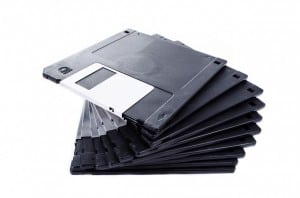
The breakneck pace of IT development is exciting. It is also intimidating. Like running down a really steep hill. Except instead of, “Will I fall and break my legs?” the IT question is: “How do I know the solution I buy won’t be worthy of anything more than collecting dust, 3 years from now?”
Unless you purchase IT products with backwards compatibility and modular design, you have little assurance. Three years is a pretty short lifespan for any business IT, but premium business IT is built to last.
Backwards compatibility and modular design, together, allow you to update software, add technology, expand storage space, increase connectivity, and whatever you need later on.
Here is an example.
IBM engineers all its products to be backwards-compatible, and its V3700 is modular. The V3700 is a Storage Area Network (SAN) with enterprise-class features and a price/size for small and mid-sized businesses.
IBM continues to roll-out software updates throughout the year. These updates optimize performance and add new features as they are designed. The V3700’s software is constantly improving and developing, like a brain in school.
The modular design allows you to add shelves or drawers to the brain whenever your business grows or needs a physical improvement. If you need more storage space, you can simply attach a new drawer or shelf to the unit. Because IBM’s solutions are backwards compatible, any new IBM technology that has been developed since the initial purchase will be compatible with the SAN. If the drive size has increased from 600G to 900G, you can install a shelf complete with the new 900G drives without sacrificing any of the drives you bought previously.
Even connectivity is modular, which means that any channel can support a different type of connectivity or speed. (Read more about the various types of connectivity, such as Fiber Channel, SAS, iSCSI.)
Modular design allows the hardware to evolve continuously with technology and your business concerns. Of course each new piece costs something, but the initial investment of the SAN continues to deliver value and power new tools. As you invest more into the product, it gains functionality rather than limiting your options.
The ability to upgrade without replacement, or by replacing specific parts, saves money. The saved resources also facilitate a greater agility.
Call our business managed IT services department directly at (404) 777-0147 or simply fill out this form and we will get in touch with you to set up a getting-to-know-you introductory phone call.
Fill in our quick form
We'll schedule an introductory phone call
We'll take the time to listen and plan the next steps
11285 Elkins Rd Suite E1, Roswell, GA 30076
© Copyright 2024 Centerpoint IT. All Rights Reserved. Website in partnership with Tech Pro Marketing. | Privacy Policy
Get Immediate Help For All Your Technology Issues (404) 777-0147

If you want our team at Centerpoint IT to help you with all or any part of your business IT, cybersecurity, or telephone services, just book a call.
Fill in your information below to get started today.
"*" indicates required fields
Fill in your information below to schedule now.
"*" indicates required fields
Before your organization commits to 1, 2, 3 or even longer managed IT services contract, understand what you’re getting. Centerpoint IT gives you the facts in our Managed IT Services Buyer’s Guide.
Enter your information below and we’ll send it over.
"*" indicates required fields

We are turning 15 and want to celebrate this milestone with you because without you this would not have been possible. Throughout this year look for special promotions on services and tools aimed at Making IT Simple for You so you can focus on your business.

We are turning 15 and want to celebrate this milestone with you because without you this would not have been possible. Throughout this year look for special promotions on services and tools aimed at Making IT Simple for You so you can focus on your business.
https://calendly.com/centerpoint-it/discovery-call